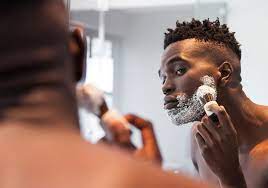- Empty cart.
- Continue Shopping
How to Prevent and Treat Razor Burn

Razor burn is a common skin irritation that many people experience after shaving. It can result in redness, itching, and discomfort. Fortunately, there are steps you can take to prevent and treat razor burn for smoother, irritation-free skin.
Preventing Razor Burn
1. Pre-Shave Preparation:
- Exfoliate: Before shaving, exfoliate your skin to remove dead skin cells. This helps prevent ingrown hairs and allows for a closer shave.
- Warm Water: Use warm water to soften the hair and open up your pores. Shaving in the shower or immediately after a shower can be effective.
2. Select the Right Razor and Blades:
- Sharp Blades: Use sharp, clean razor blades. Dull blades can cause more friction and increase the likelihood of razor burn.
- Single-Blade Razors: Consider using a single-blade safety razor or an electric shaver, as they can be less irritating than multi-blade razors.
3. Shaving Techniques:
- Shave in the Direction of Hair Growth: Shaving against the grain can increase the risk of razor burn. Shave in the direction of hair growth to reduce irritation.
- Light Pressure: Apply gentle, even pressure while shaving. Avoid pressing too hard, as it can lead to skin irritation.
4. Use Shaving Cream or Gel:
- Apply a high-quality shaving cream or gel to your skin. These products provide lubrication and help the razor glide smoothly, reducing friction.
5. Clean Your Razor:
- Rinse your razor frequently during shaving to remove hair and shaving cream buildup. A clogged razor can cause irritation.
6. After-Shave Care:
- After shaving, rinse your face with cold water to close the pores and reduce inflammation.
- Apply an alcohol-free, moisturizing, and soothing after-shave lotion or balm to hydrate the skin and prevent irritation.
Treating Razor Burn
If you’ve already experienced razor burn, here’s how to treat it effectively:
1. Cold Compress:
- Apply a cold compress or ice pack to the affected area. This can reduce redness and soothe the skin.
2. Aloe Vera:
- Apply aloe vera gel to the irritated area. Aloe vera has anti-inflammatory properties that can help calm the skin.
3. Over-the-Counter Products:
- Consider using over-the-counter products containing hydrocortisone or salicylic acid to reduce inflammation and redness.
4. Moisturize:
- Keep the affected area well-hydrated with a fragrance-free, hypoallergenic moisturizer. This helps the skin heal and prevents further irritation.
5. Avoid Further Irritation:
- Refrain from shaving the affected area until the razor burn has healed completely to prevent additional irritation.
6. Avoid Tight Clothing:
- If the razor burn is in an area where clothing can rub against it, wear loose-fitting clothing to minimize friction.
7. Patience and Avoid Scratching:
- Razor burn typically heals on its own within a few days. Avoid scratching the affected area, as it can worsen irritation and potentially lead to infection.
8. Consult a Dermatologist:
- If razor burn persists or becomes infected, consult a dermatologist for professional guidance and treatment.
Preventing Future Razor Burn
To prevent razor burn in the future, consider making these habits a regular part of your shaving routine:
- Maintain good hygiene and regularly clean your razors.
- Replace your razor blades as soon as they start to feel dull.
- Use a moisturizing shaving cream or gel that suits your skin type.
- Shave less frequently to give your skin time to recover between shaves.
- Consider alternative hair removal methods like waxing or depilatory creams if you’re prone to razor burn.
By following these preventive measures and practicing proper after-shave care, you can enjoy a smoother, more comfortable shaving experience and reduce the risk of razor burn.








